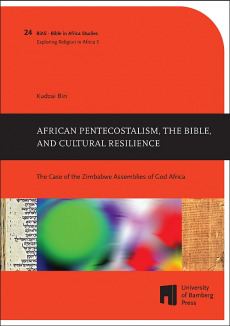Kudzai Biri
African Pentecostalism, the Bible, and Cultural Resilience
The Case of the Zimbabwe Assemblies of God Africa
Reihe: Bible in Africa studiesThe study investigates the resilience of Shona religion and culture among ZAOGA Pentecostal Christians. It endeavours to establish whether the Pentecostal Christians in Zimbabwe, through a case study of ZAOGA, have embraced aspects of Shona traditional religion and culture. Through an application of phenomenological-comparative approach as well as fieldwork, the study confirms continuity, change and adaptation of indigenous beliefs and practices in a contemporary Pentecostal movement. Whereas the Pentecostal ideology suggests that ‘old things’ have passed away, it appears that ‘old things’ continue to have significance for the ‘new’. It demonstrates how belief in avenging spirits, witches and witchcraft, value of words spoken prior to death, the role, status and significance of women, belief in unnatural events, liturgy and salvation have remained relevant to the lives of ZAOGA Shona converts. The patterns of continuity, discontinuity, extension, collaboration, contradiction, re-interpretation and rejection between Shona traditional religion and culture and ZAOGA are explored, challenging the framing of African Pentecostalism as a poor imitation and parroting of theological constructions from North America. Although Ezekiel Guti (the founder and central figure in the study) does appropriate ideas and concepts from North American Pentecostalism, he displays remarkable sensitivity to Shona religion and culture. In order to meet the requirements and purpose of this study, themes have been selected on the basis of their degree of comparison. These themes are; words spoken prior to/on death bed, belief in avenging spirits, the role, status and significance of women, belief in unnatural events, belief in witches and witchcraft, liturgy and salvation. The study narrowed down to an officially structured organized whole in order to give a deeper understanding of the orientation of ZAOGA. An African womanist is framework is adapted to challenge ZAOGA to promote the well-being of women. The resilience of Shona religion and culture, serve to fill the gap of published material on the Shona and Pentecostalism, breaking new ground by exploring Shona religious and cultural aspects that have displayed remarkable resilience within the Pentecostal fraternity. My conclusion is that while ZAOGA self-consciously presents itself as a sophisticated, trans-national and progressive Pentecostal movement, members continue to wrestle with Shona indigenous beliefs and practices.

